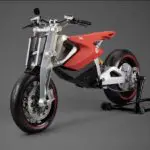The Kawasaki Ninja is one of the most popular starter motorcycles on the market. In fact Kawasaki is a leader/pioneer in the beginner motorcycle market. The Ninja 250r is a bike that many of us have learned to ride on. Its easy to ride. It has a predictable powerband, and its an inexpensive motorcycle new or used.
In 2014 Kawasaki upgraded the 250R to the fuel injected Ninja 300 giving it an impressive but still beginner friendly 39hp. Lately displacement has been creeping up in the beginner motorcycle market and now Kawasaki is selling a Ninja 400.
So are these motorcycles problems free? Are there any issues you should be aware of when buying used or a new Ninja 400? If you have these questions you’ve come to the right place.
1. Cold Blooded Ninja 250r
The Ninja 250r is notoriously cold blooded. Its carbureted engine is a struggle to start in any weather under 65 degrees Fahrenheit. If you do manage to get the engine running in cold weather, then you have to wait several minutes for the engine to warm up before you can start riding. The newer Ninja 300 and 400 do not have this problem because they moved to fuel injection.
2. Kawasaki Ninja 250r Fuel System Problems
The Ninja 250r is also known to have fuel system problems related to the carburetor. If the motorcycle is not regularly ridden, carbon deposits and residue can clog the carburetor’s jets, valves, and even fuel lines. These will obviously affect fuel delivery to the engine and performance will suffer.
The Ninja 250r is getting up there in age and like any old bike leaks can are a common problem. In particular, vacuum leaks will give the fuel system problems. Vacuum leaks or leaks in the intake manifold can have a significant affect on how well the engine runs.
A good way to test for leaks is to spray starter fluid on the exterior of the engine while the motorcycle is idling at a stable speed. If the rpms jump up then you know that the engine is sucking the starter fluid in through a leak.
3. Valve Adjustment
Another issue is that your Ninja could be in need of a valve adjustment or at least due for a valve clearance check. Check out these 5 symptoms here, and if your motorcycle has any of them (pre-ignition, rattling noises, overheating, increased fuel consumption, etc) it may be time for a valve adjustment.
A pre-2008 Ninja 250r requires a valve clearance check every 6,000 miles, while the post-2008 Ninjas require it every 7,500 miles. The Ninja 300 also requires valve checks every 7,500 miles.
4. Ninja 300 Stalling Issues
The first year 2013 Ninja 300 had several issues. The most prominent issue was a stalling problem that caused Kawasaki to recall 11,097 Ninja 300’s of the 2013 model year.
The problem was that the engine could stall under deceleration, creating a potentially dangerous situation for the rider. Kawasaki determined that an incorrect setting on the ECU was responsible for the problem. The recall involves replacing the ECU.
5. Ninja 300 ABS Issues
The 2013 Ninja 300 wasn’t a stellar year as it also suffered from ABS (anti-lock braking system) issues. The issues were caused during the manufacturing process of the ABS pump. The parts were not properly cleaned allowing dust particles to contaminate the pump and fluid. These caused a potential interference with the ABS system.
As you can imagine unpredictable braking performance often leads to an increase in a potential crash. Around 1,000 Ninjas were affected.
6. Ninja 400 Transmission Problems
The Ninja 400 is known to have issues with its transmission. Riders have reported false neutrals, “finding neutral” between 4th and 5th gear, gears failing to engage when shifting, transmission slipping, and trouble upshifting and downshifting.
There are several reports of riders finding false neutrals in high gear while traveling up hill. Since the Ninja 400 came out in 2018 we are still overserving its reliability.
Another power transmission related problem is the clutch slipping. Many owners have reported high rpms, delayed acceleration, and delayed engagement of the clutch plates.
It is rumored that these issues are caused by a design flaw that causes the Ninja 400’s clutch plates to wear out prematurely.
7. Ninja 400 Running Hot
One of the worst problems an engine can have is overheating. Overheating can wreck just about any component on your motorcycle. Several riders have reported their Ninja 400 running very hot and on the verge of overheating.
The Ninja comes equipped with liquid cooling and a fan that blows over the radiator when the bike reaches high temperatures. It appears that this issue is more likely to occur in hot climates and cause discomfort to the rider rather than actual engine damage. Many riders have noted that their bike’s coolant temp light reaches 5 bars with 6 being a point of concern.
So if you do become interested in owning a Ninja and you live in a warm climate, be sure to take it for a test ride on a warm day so you can judge the cooling performance for yourself.
Why You Should Buy A Ninja
Despite these issues Kawasaki Ninjas are some of the best entry level sportbikes that money can buy. In fact that is why there are so many of them out on the road and on the used market.
A used Ninja 250r, 300, or even a new Ninja 400 all make excellent choices for a first bike. They make predicable power that is easy to control. Their handling performance is excellent. Another reason is that the Ninja is incredibly lightweight.
This makes it easy to maneuver at low speeds. Learning to ride at low speeds is far harder for new riders than they suspect. A light and agile motorcycle makes learning the necessary skills much easier.
If you are in the market for a used bike, we recommend to get a 2014 or later Ninja 300 over the 250r as the 300 has fuel injection. Fuel injection is one of the best additions to the Ninja, and fixes almost all issues that the Ninja has.




